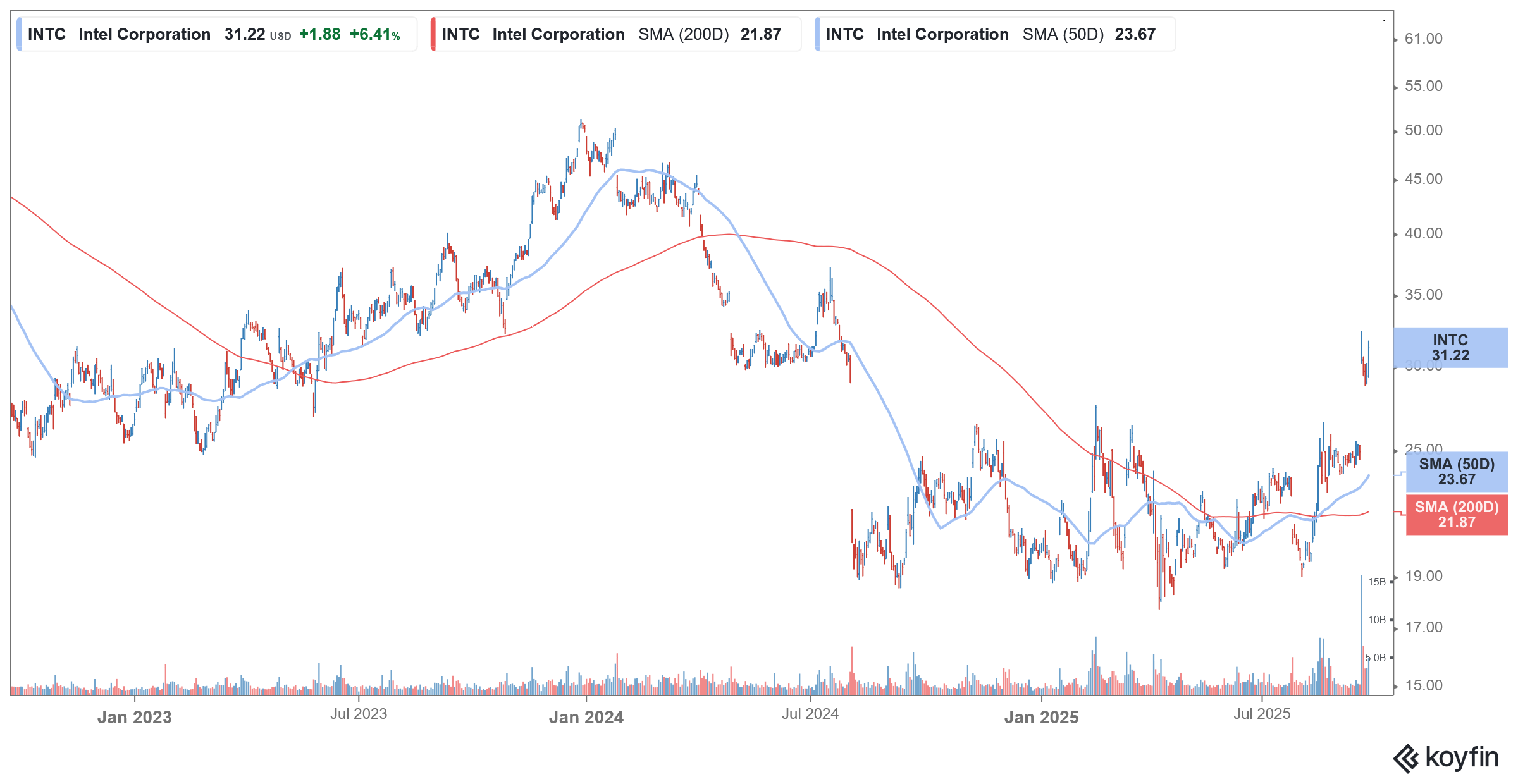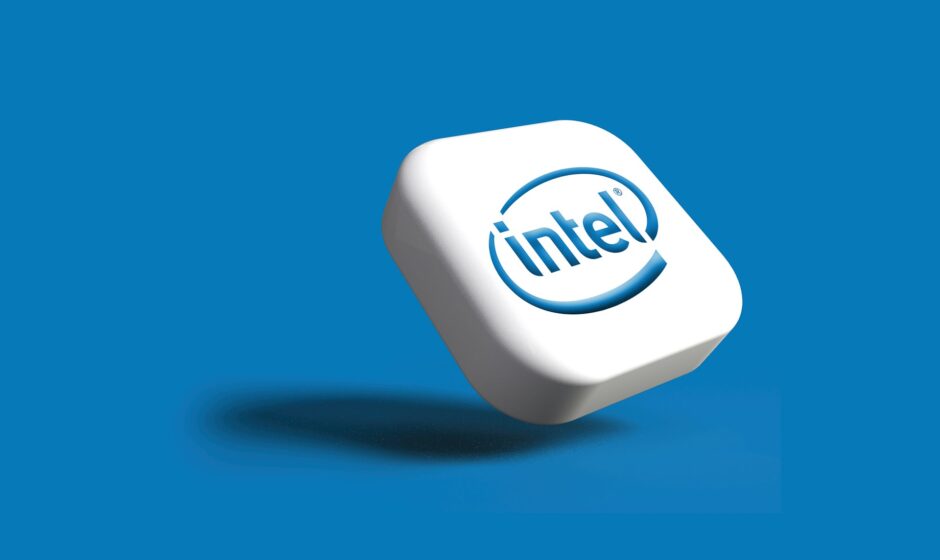Please note that we are not authorised to provide any investment advice. The content on this page is for information purposes only.
Intel stock (NYSE: INTC) closed sharply higher yesterday and is up in US pre-markets today on reports that the company is in early-stage talks with Apple about a potential investment, part of its broader strategy to secure partnerships and funding for its comeback bid.
Intel’s pursuit of Apple’s investment is a significant move in its ongoing efforts to regain its footing in the highly competitive semiconductor market. The company, which once dominated the chip industry, has recently faced a series of challenges, including losing its technological lead, ceding market share to rivals like AMD and Nvidia, and struggling to capitalize on the booming artificial intelligence (AI) chip market. This has prompted Intel to seek outside investment and strategic alliances to bolster its finances and support its turnaround plan.
Apple was once a key Intel customer
Apple’s relationship with Intel has been a bit nuanced, and Intel had turned down requests to supply processors for the Apple iPhone. The company believed that Apple might not be able to sell enough of these, and it was a tiny market to bet on. In hindsight, it was perhaps the biggest mistake Intel made, as global smartphone sales now far exceed those of PCs.
Notably, Apple was once a key Intel customer but moved away from Intel’s processors for its Macs beginning in 2020, transiting to its own custom silicon chips, manufactured by TSMC. Meanwhile, Intel has been looking to challenge TSMC, the world’s biggest foundry, with its own foundry operations.
However, Intel’s foundry business, which seeks to make chips for third parties, has failed to take off and has lost billions of dollars. The company has since scaled back its foundry business, and CEO Lip-Bu Tan has stated that it will proceed with the 14A production process only after receiving confirmed orders from customers.
INTC Has Attracted Billions of Dollars in Investments
Meanwhile, Intel has attracted billions of dollars in investments over the last month. Earlier this month, Nvidia announced a $5 billion investment in the company. As part of the agreement, Nvidia will acquire common stock and forge a strategic partnership to co-develop products for AI infrastructure and personal computers.
This deal is a substantial lifeline for Intel, which has struggled financially and technologically after missing the shift to mobile computing and, more recently, falling behind in the AI boom. The company posted significant losses last year and in the first half of this year.
For Nvidia, this investment is a strategic power play. It enhances its ability to control more of the computing stack, especially in AI infrastructure, by aligning with the dominant CPU provider. It also reduces reliance on external bottlenecks and gives it greater influence over integrated solutions that combine CPUs and GPUs. By tightly integrating its technology with Intel’s widely adopted x86 architecture, Nvidia strengthens its dominance in the AI market and poses a formidable challenge to competitors like AMD, which has built its market position on strong CPU-GPU integration.
The US Government Converted Its Grant to Intel Into Equity
In August, SoftBank, which vowed to invest $100 billion in the US over four years following a meeting with Donald Trump in December 2024, said that it would invest $2 billion in Intel at $23 per share.
A few days after SoftBank’s announcement, the US government confirmed that it had acquired a 10% equity stake in Intel, a move that represents one of the biggest federal interventions in a private company since the 2008 financial crisis. The $8.9 billion purchase, which makes the government one of Intel’s largest shareholders, is being funded by converting previously promised grants from the CHIPS Act and the Secure Enclave program into shares.
The government’s equity stake in Intel will be funded by the $3.2 billion awarded to the company as part of the Secure Enclave program, as well as through the remaining $5.7 billion in grants that it was awarded, but not yet paid under the CHIPS and Science Act.
Under the new arrangement, the government acquires 433.3 million shares of Intel at a discounted price of $20.47 per share, a move Commerce Secretary Howard Lutnick hailed as a way to get “equity for the American people.”
Additionally, the government will receive a five-year warrant, at $20 per share for an additional 5% of stake, which would be exercised only if Intel’s stake in its foundry business falls below 51%.


What Went Wrong with INTC?
Intel was quite slow with innovation, and AMD gradually took its market share in the PC market. Intel’s woes are far from over, and Nvidia, AMD, and Qualcomm are looking to further eat into its PC market share with Arm-based semiconductors. Intel is still working with its x86 technology, which it created in 1981.
More recently, Intel seems to have lost out on the race in AI chips, even as rivals, especially Nvidia, are printing money selling AI chips.
Intel Is a Critical Component of US Manufacturing
Meanwhile, Intel is far more than just a chipmaker; it’s a critical component of US manufacturing, economic strength, and national security. As the only leading-edge semiconductor company in the US that both designs and manufactures its own chips, Intel plays an irreplaceable role in the domestic technology ecosystem. This position has become even more vital as the US seeks to re-shore critical manufacturing and reduce its reliance on foreign supply chains.
The ability to manufacture advanced semiconductors domestically is a strategic imperative for the US. Chips are the essential building blocks for virtually all modern technology, from personal computers and smartphones to military hardware and artificial intelligence systems.
Intel is a crucial piece for US manufacturing, especially as demand for AI chips skyrockets amid the AI pivot.
#Intel #Stock #Rises #Reports #Seeking #Investment #Apple


